Sanny checks out the new Deviate Highlander, an enduro bike with idler.
Back in November 2017, Deviate took a bold step into the mountain bike market when they launched their Guide carbon fibre Enduro machine. Building on Chris Deverson’s years of engineering experience and Ben Jones’ years of guiding experience in the Alps and the UK, it was, fair to say, a fairly uncompromising take on mountain bike design. Featuring a Pinion gearbox and a high pivot idler design, I came away impressed. Despite weighing in at 33 pounds, it climbed slopes that on other Enduro machines you would be off and walking, while on steep descents and on trails that were on the more rocky and extreme end of the spectrum, it took everything in its stride. Pedalling through rock gardens was an eye opener – the suspension staying active throughout even under full power. In short, I really liked it. As I wrote at the time, if the Guide had come from a big name manufacturer, riders would be falling over themselves to hand over their cash.
- Price: £2,749 with Cane Creek DB Inline Shock / £2,999 with Fox X2 Shock
- From: www.deviatecycles.com
- Size tested: Medium
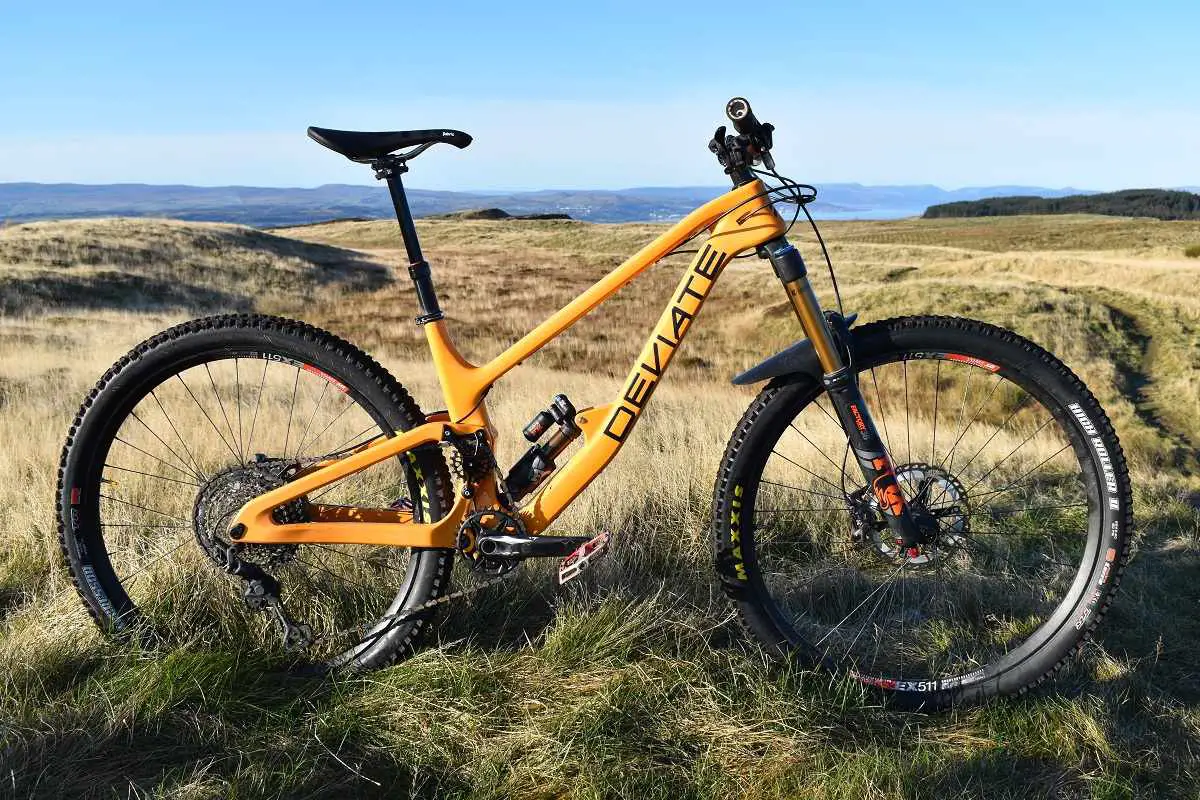
Jump forward to now and Deviate have a new offering in the shape of the Highlander. Building on their experience with the Guide, Deviate have taken the best features of their original design and packaged it in a longer travel 29er frame. This time around, there is no Pinion gearbox option – rather it is tried and tested derailleur technology which every rider is familiar with. While I was a little bit disappointed when I heard that the new frame wouldn’t feature the Pinion gearbox, I rather suspect that for the vast majority of riders out there, it is a much easier proposition to get their head around. Despite the proven technology, gearboxes are still relatively rare on the trail and are perhaps a little too left field for many. However, the beating heart of the Guide was the suspension design and idler system and those have been retained in the new Highlander Design.
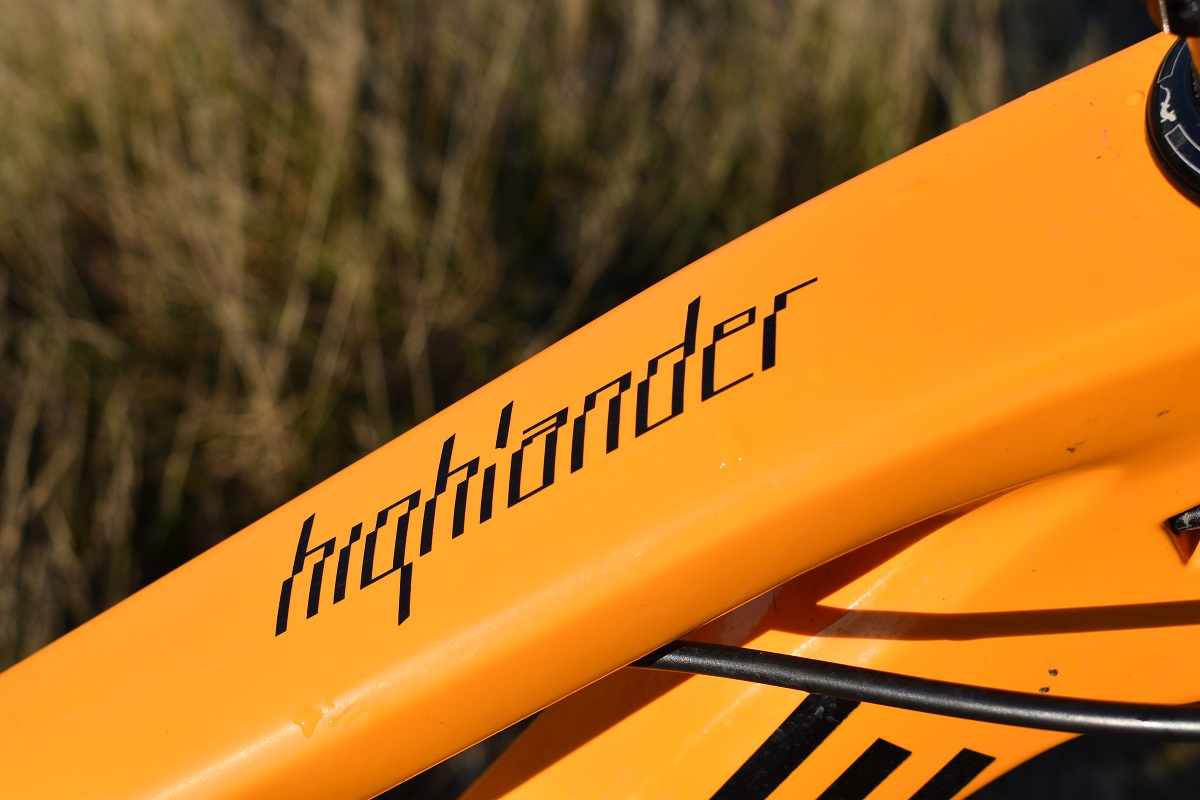
With the promise of delivering the same big hitting but efficient suspension performance of the Guide in a 29er format, I have to admit to being pretty excited at the prospect of getting my hands on a pre-production prototype for a World Exclusive test. Before that, let me tell you about the key design features and the numbers.
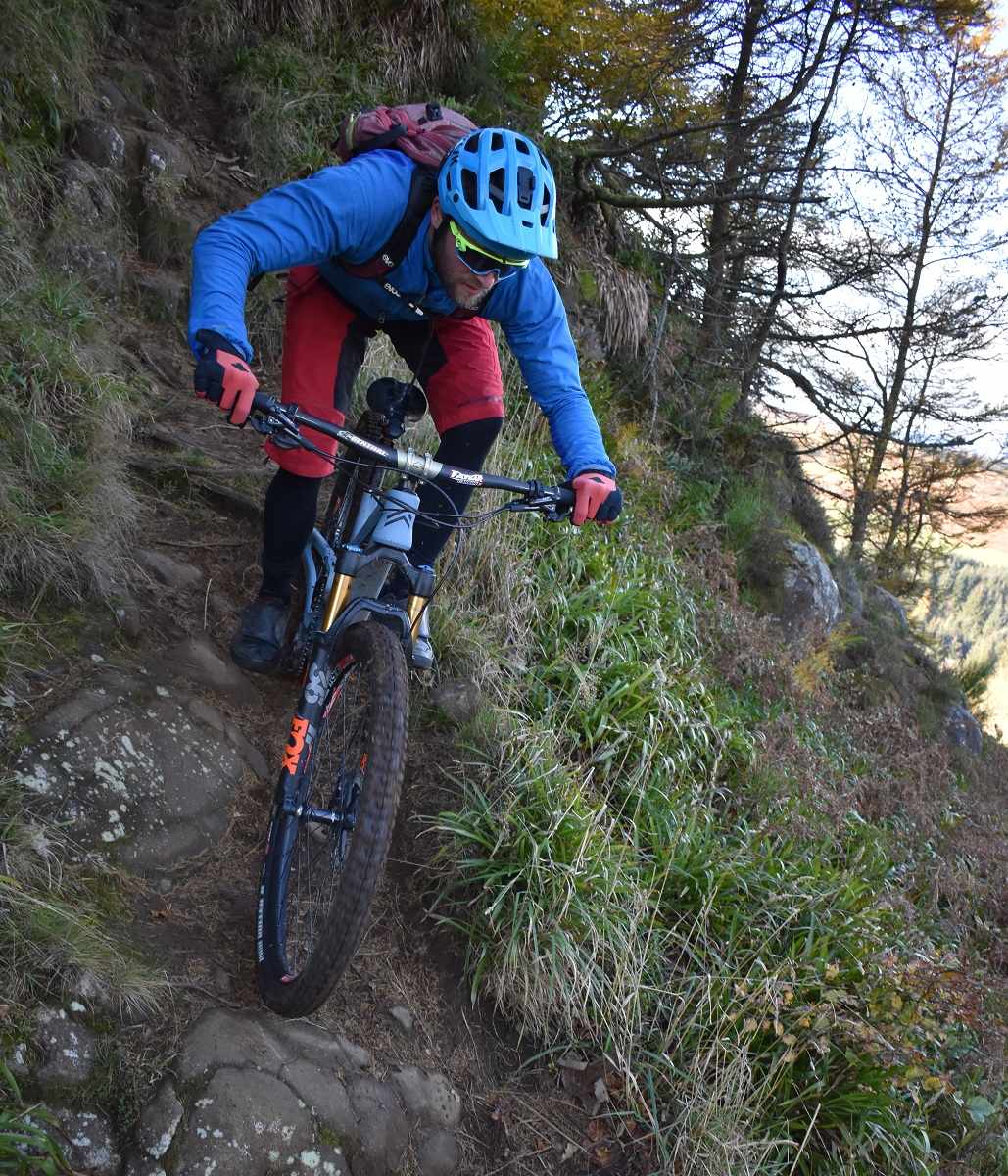
With a low slung shock position immediately above and front of the bottom bracket, the Highlander adopts the current on trend approach to shock location. It is a lower link mounted shock design that the likes of the Santa Cruz Hightower amongst others have adopted with great success. Executed properly, it works well with an added bonus of just looking right.
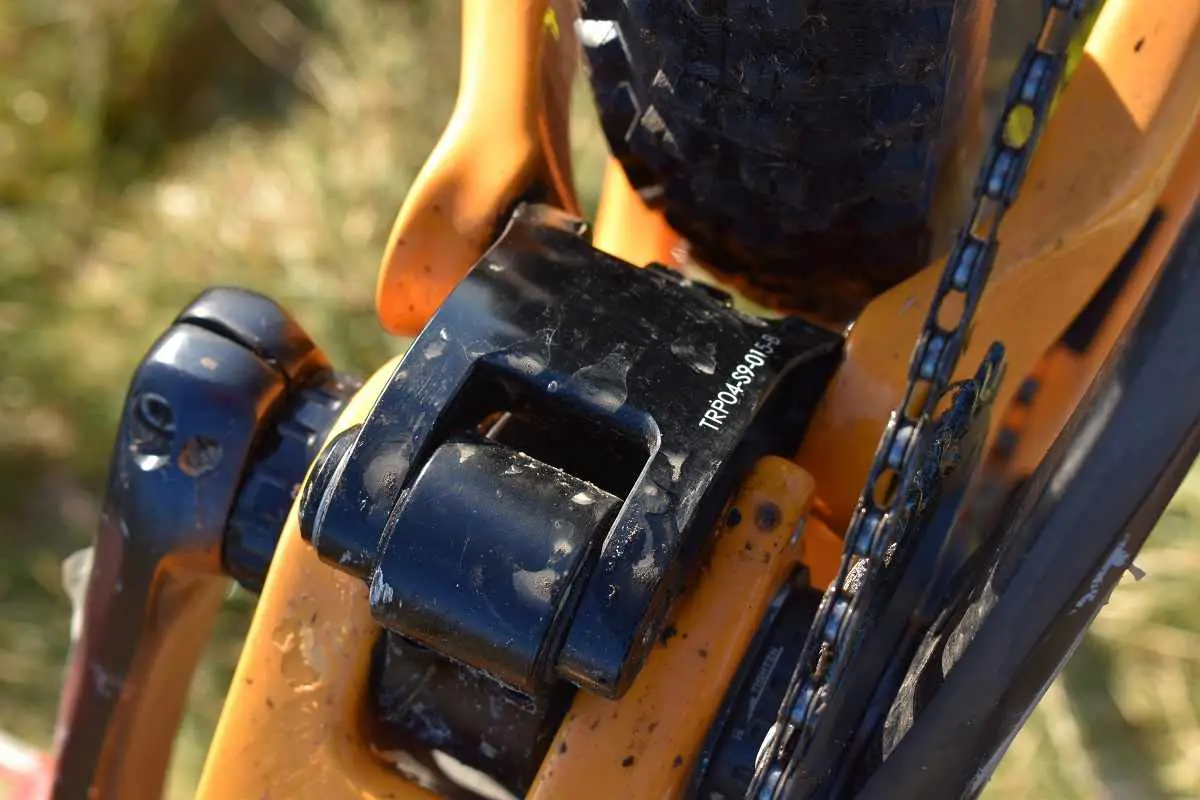
As you would no doubt expect, the frame is carbon fibre with a mix of internal and external cable routing. Under the top tube is a recessed cable run which allows for ease of access to cabling for the home and professional mechanic alike while retaining the clean lines of the frame. To my eyes, it is an elegant and neat solution that means swapping out brakes isn’t an exercise in Kermodian ranting.
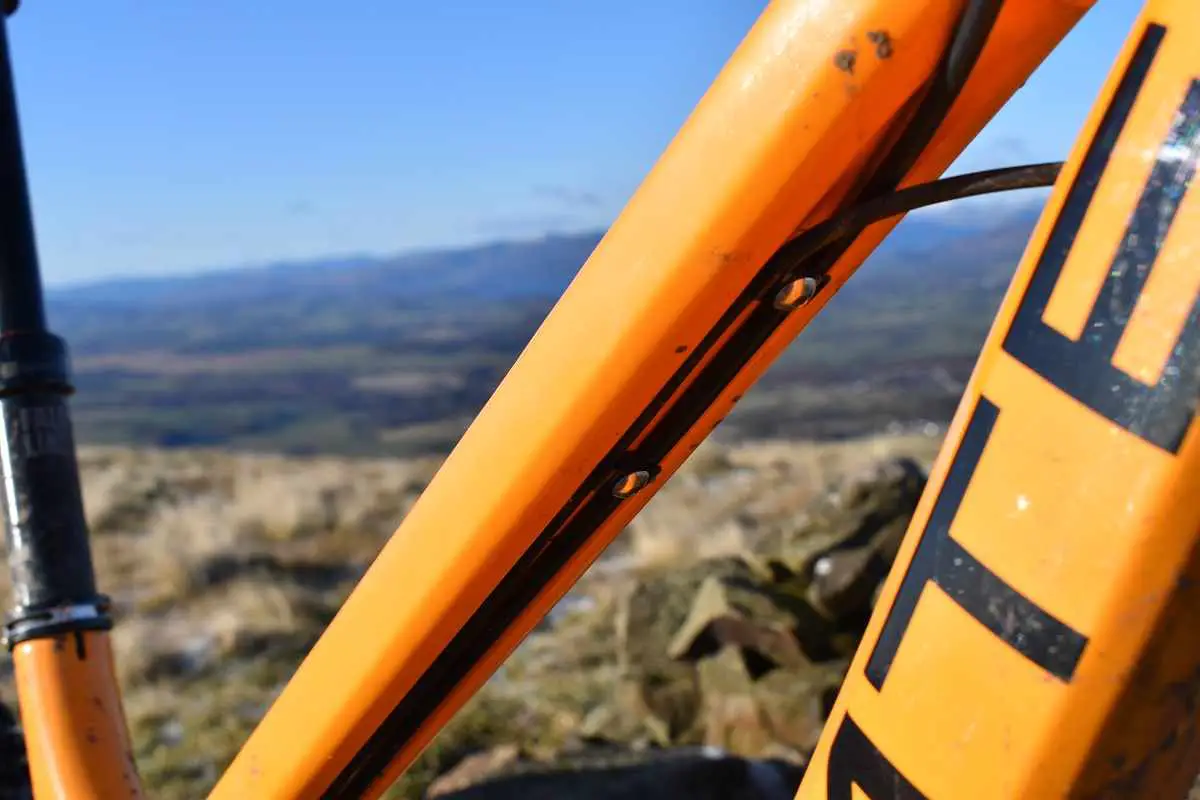
The bang on trend tall seat tower means that there is oodles of real world clearance for your downstairs unmentionables while the overall theme is long, low and slack.
So what is the deal with the idler and high pivot design then?
So far, so, well…….normal. Where Deviate noticeably (ahem) deviates from the norm is the inclusion of the idler design. Positioned above and slightly behind the single front chainring, there is a smaller secondary guide which controls the interaction between the chain and the suspension system. The overall design of the bike is based on a high pivot which begs the question why is a high pivot a good thing? Well according to minds sharper than mine, a high pivot creates a rearward axle path while a properly positioned idler can optimise pedalling efficiency promising to virtually eliminate pedal feedback. It is a design that has been used to great effect in the world of downhill racing – executed properly it promises to deliver the Holy Grail of plush suspension performance coupled with efficiency both up trail and down.
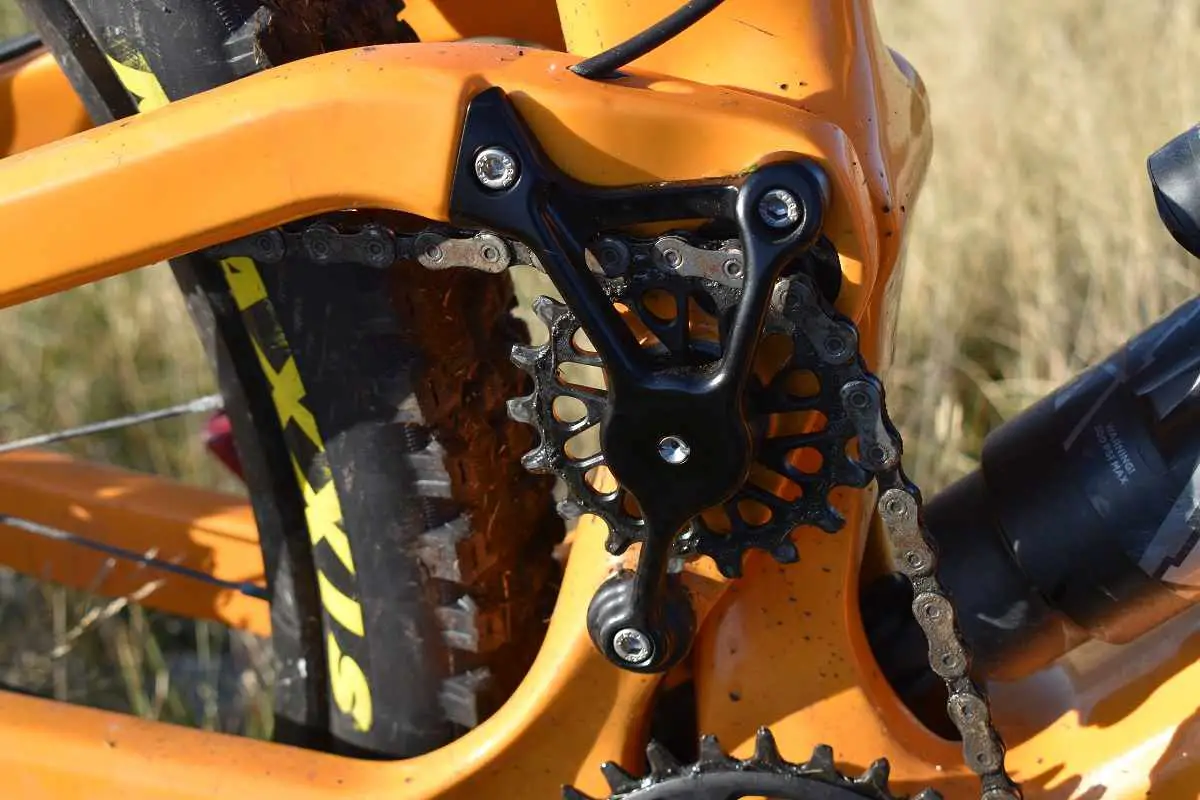
If I am being blunt, that is a very lofty ambition – many have tried and many have failed. That being said, Deviate came awfully close with their Guide so have the real world experience and know-how to be in as good a position as any to deliver it in a 140mm travel, 29er frame.
Build Options
In terms of build, Deviate are starting with a frame only option with a choice of two shocks – a Cane Creek DB Inline Shock at £2,749 and a Fox X2 at £2,999. Compared to the competition such as the Santa Cruz Hightower CC, even the more expensive shock option is £300 less. Given that the quality of construction and finish of the prototype is on a par with the Santa Cruz, I can’t help but think that is going to draw an awful lot of price conscious riders towards the Deviate offering.
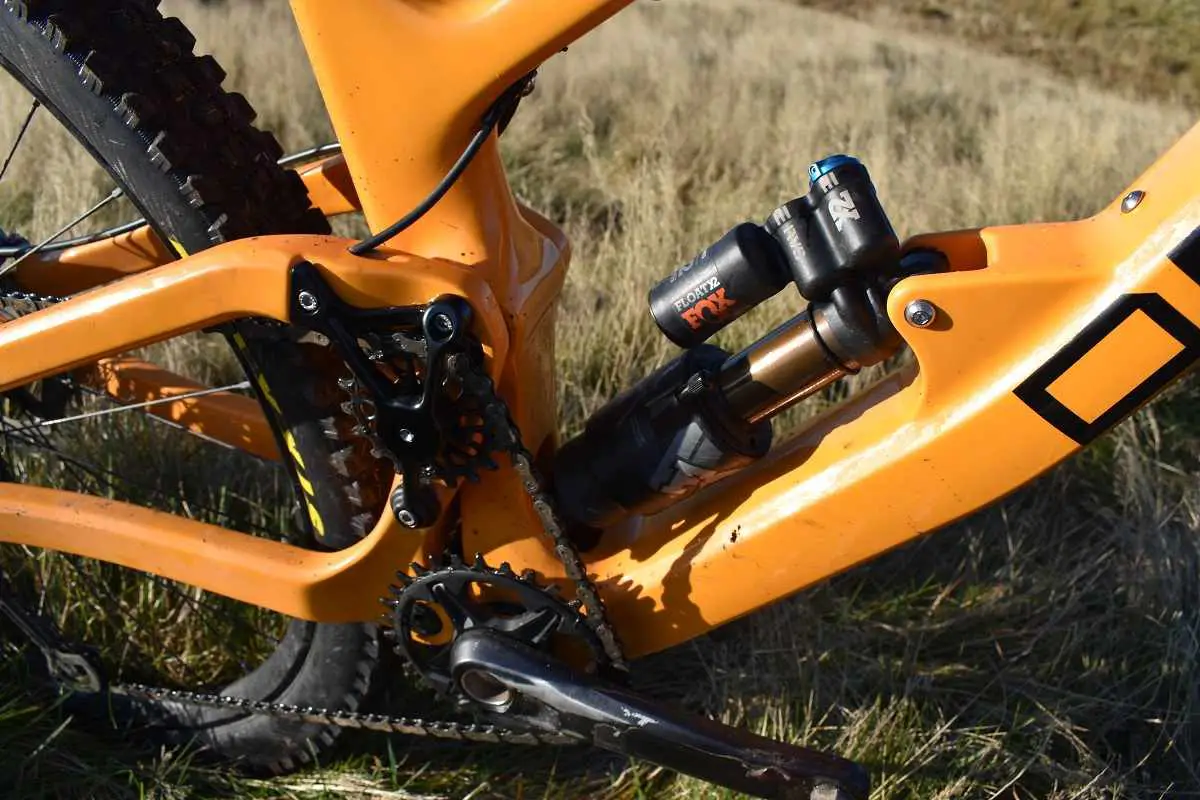
The bike I rode came equipped with a 12 speed XT drivetrain and brakes, Renthal bars, a Fabric saddle (very comfortable), DT Swiss EX 511 rims, Maxxis tyres and a Fall Line dropper post that struggled to last a ride before losing almost all internal pressure. I won’t go into the details of the build other than to say that with the exception of the dropper post and a rear tyre that struggled a bit in the mud, everything worked just fine.
Here comes the science bit!
Initially coming in two sizes, medium and large, but with more set to follow, both sizes feature a 65.5 degree head angle and 76 degree seat angle. BB Drop is 28mm on each while chainstay length is 441mm in both medium and large frame sizes. Wheelbase in 1201mm in a medium and 1231mm in a large, reach is 450mm and 480mm, stack is 615mm and 623mm while seatpost length is 410mm and 430mm respectively. Now I don’t know about you but when I read geometry charts and numbers are thrown at me, my eyes start to glaze over and I find myself using my stock not really listening any more phrases such as “Really?”, “Amazing!” and “No?” I’m not an engineer or a bike designer – I’m just a regular Joe who loves riding bikes and believes that the only way you can find out how a bike rides is to actually ride the darn thing. I’ll leave the interminably dull forum debates about angles and measurements to others who like that sort of thing.
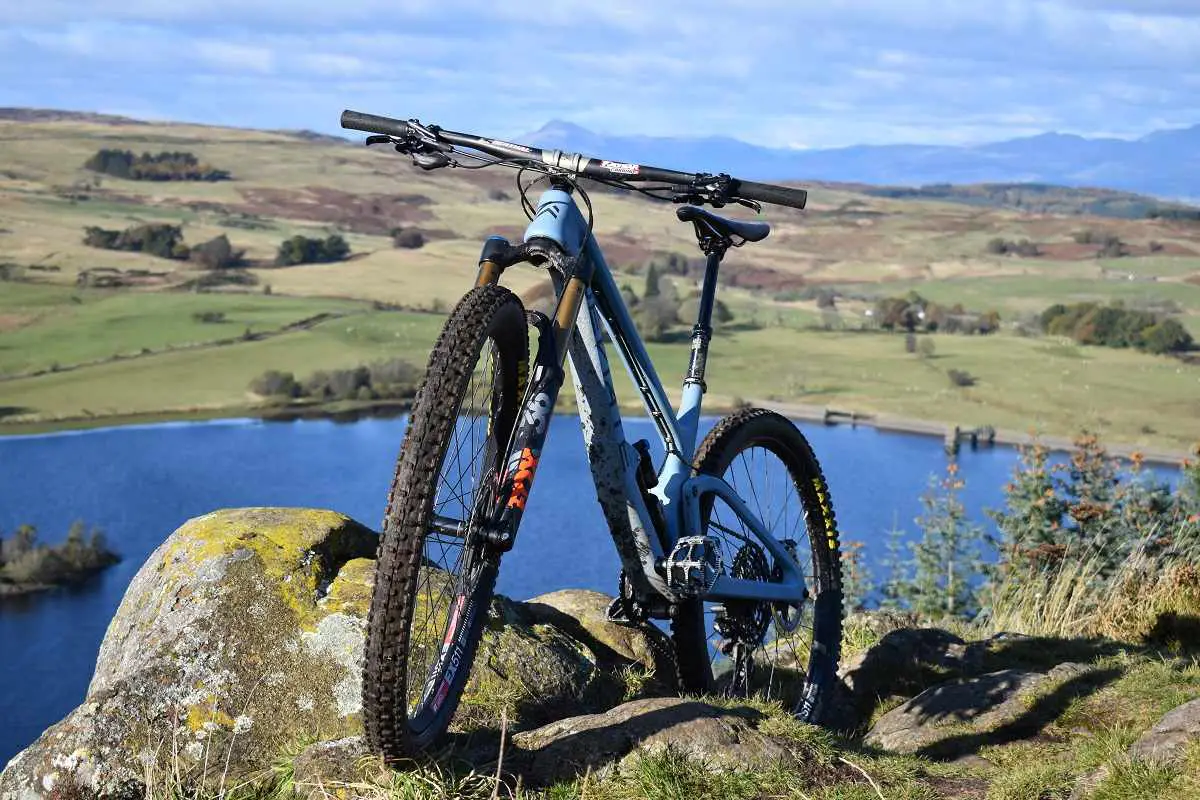
Last but by no means least, the Highlander will come in two colours – a rather fetching duck egg blue and, to my eyes at least, a rather snazzy mango orange. The pre-production prototypes came in a matt finish but will be high gloss when it comes to the final version for the simple reason that it is easier to keep clean. Production versions will also feature a bespoke built in down tube protector and ISCG mounts for a chain device.
Less chat, more riding Sanny!
Meeting up with Ben at Deviate HQ last October on a glorious bluebird day, I have to admit to being pretty excited at the prospect of riding the Highlander. In the flesh, it is a gorgeous looking bike and just looks right. However, my excitement was slightly tempered by the fact that I would be riding a medium instead of my normal large so would be right on the limit of saddle height with the front end a bit lower than I would normally ride. Set up consisted of getting on the bike and riding it in circles for a couple of minutes before doing some minor fiddling with shock pressures on the Fox X2 shock. With sag set, we were soon out and riding as we headed into the technical fun zone that is the cliffs of North Third and Cambusbaron Woods which sit at the edge of Stirling.
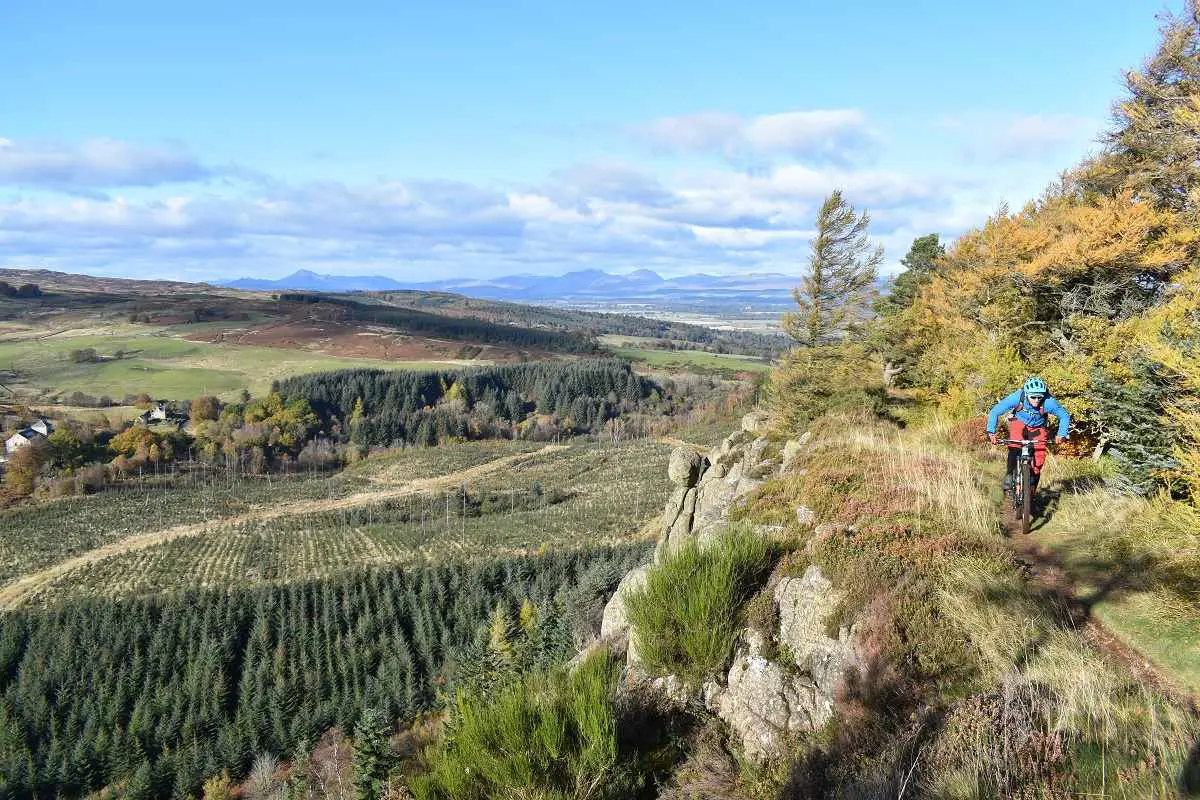
“Is this thing locked out?”
Starting with a steep road climb and following up with a blast through fast, woodland trails, I immediately noticed how different the suspension action felt from pretty much every other bike I have ridden of late. Out of the saddle, bar honking sprints barely phased the frame. “Have you locked this out, Ben? It definitely feels locked out!” I asked as I looked down at the shock. I was hammering hard but the shock was barely moving. Except it wasn’t locked out but fully open. Hmmmmmm. Thinking that the shock must be at a ridiculously high pressure, I proceeded to attack a series of exposed roots and exposed rocks while still seated. Steeling myself for my best impression of a human “Buckaroo”, the expected bum jarring thumps and clatters never came. The suspension simply soaked up trail chatter and larger impacts with ease and composure. Colour me impressed.
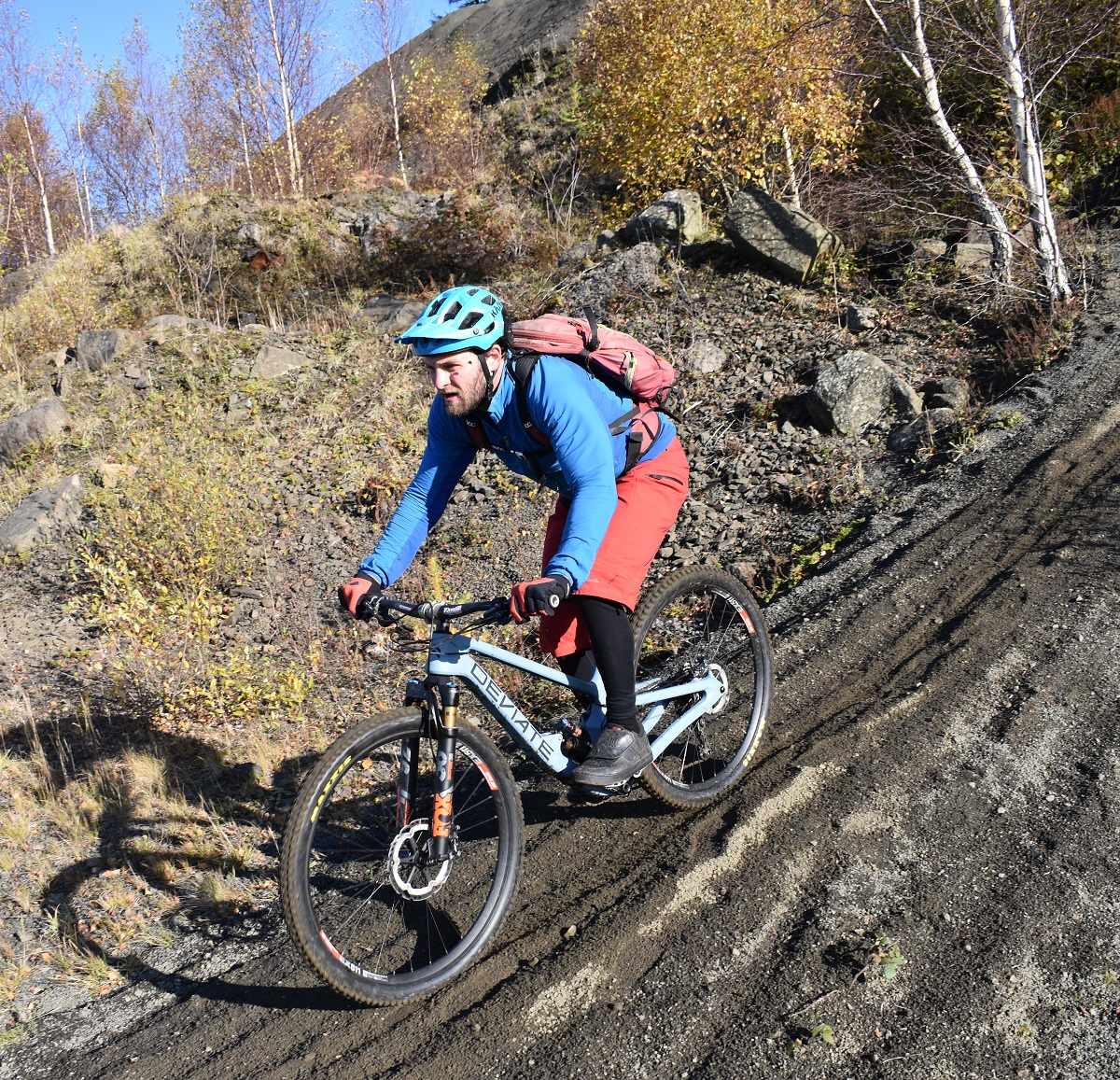
As the ride progressed, I found myself seeking out the roughest lines. Along the cliffs of North Third, exposed roots litter the trail. You simply can’t avoid them. Instead of easing off, I found myself attacking them just to experience the plushness of the suspension action. The action reminded me of the Guide when riding through chunk and gnarr – it just worked really bloody well.
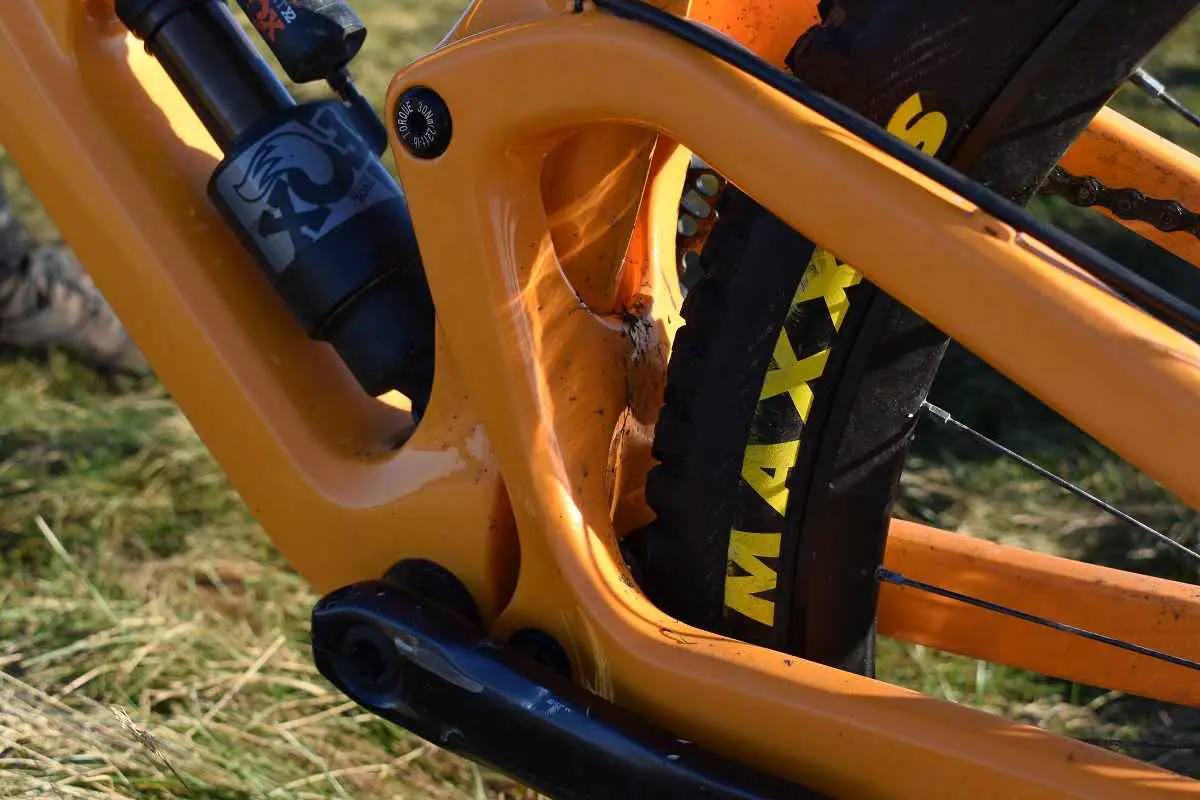
To my non engineering brain, adding an idler should, in theory at least, add a little bit of friction to the drivetrain and potentially reduce efficiency. However, in practice, at no point during the test did I even notice the idler was there. Irrespective of which gear I was in, it felt like the drivetrain on pretty much any other bike. The large cog just kept turning and doing its job throughout the period of the test.
On the up.
Climbing wise, the back end feels like it is digging in and does a really good job of finding traction on even the steepest of trails. The only thing that held it back was the size of the 34t front ring – to my mind anything higher than a thirty up front is unnecessarily large so I would have welcomed something a bit smaller. While I am being picky, the Maxxis Aggressor rear tyre would be getting replaced too. In wet slop aka typical Scottish summer trails, it doesn’t find as much grip as its name would suggest. One for the circular file. On the plus side, mud clearance is very good so while the tyre might have had the traction abilities of a bar of soap, at least the frame never clogged up with gloop and filth.
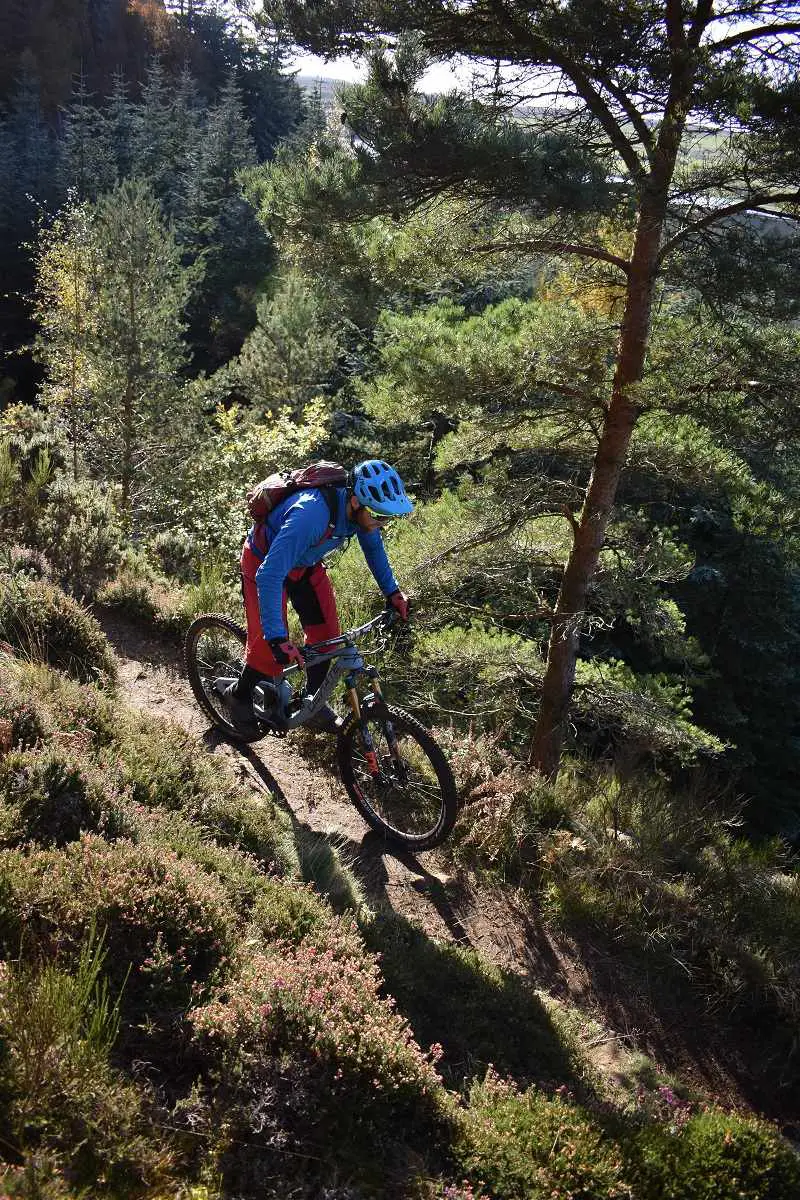
Mini DH capability.
What goes up must come down and the cliffs offer a series of short but steep and technical drops ending with a beautifully flowy, albeit rooty and exposed final section of tree lined singletrack. On the really steep stuff, the Highlander felt confident and composed – despite the front end being lower than I would have on my own bike, it just worked. The suspension worked exactly as promised – soaking up both trail chatter and big hits with ease. The more I rode it, the more I liked it. All too soon, we were back at base and the ride was over, much to my disappointment. However, my time with the bike was extended as I was able to take it home for a couple of weeks of riding on my local trails which enabled me to refine my thoughts while getting second and third opinions from my riding buddies Graham and Rory.
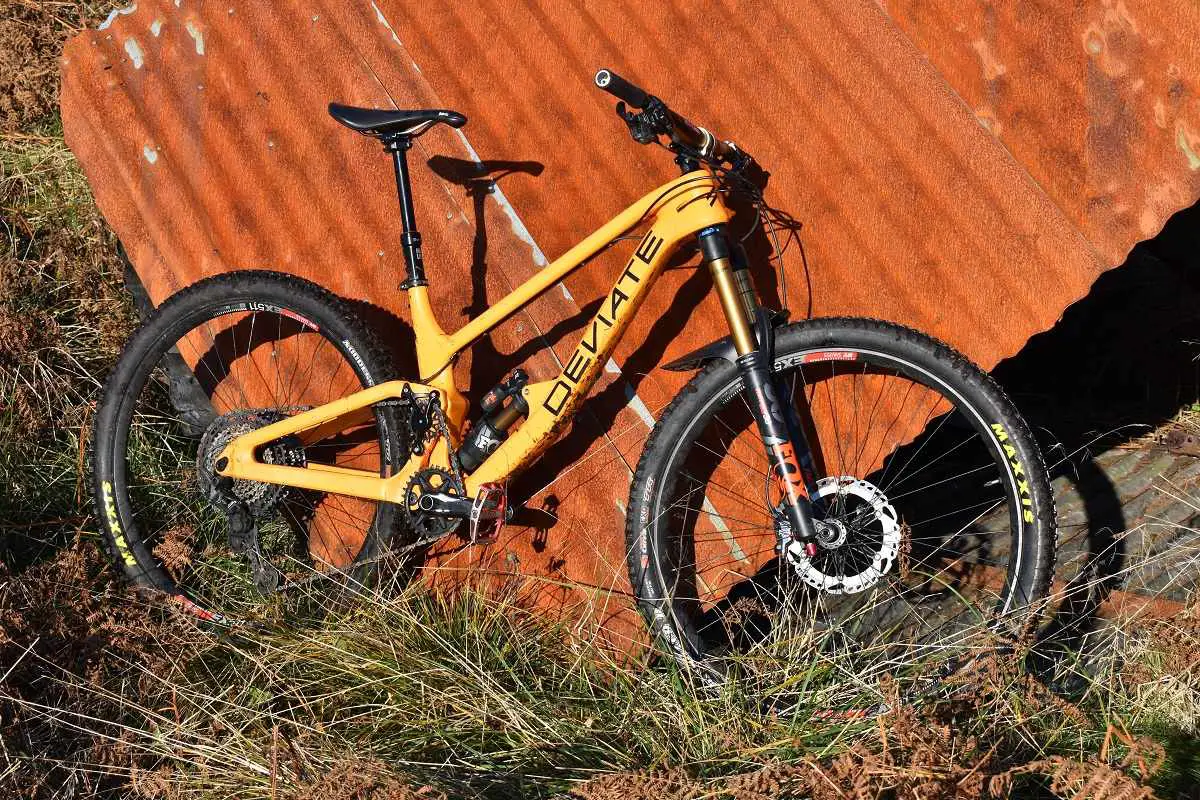
Getting a second and third opinion.
First test was an extended mission with Graham up the Kilpatrick Hills on a late Autumn morning. Winching our way to the trig point above Cochno reservoir, I watched as Graham rode up a steep grassy slope that normally defeats him on his regular bike. The only factor that was different was the bike – chalk that up to the Highlander’s climbing prowess.
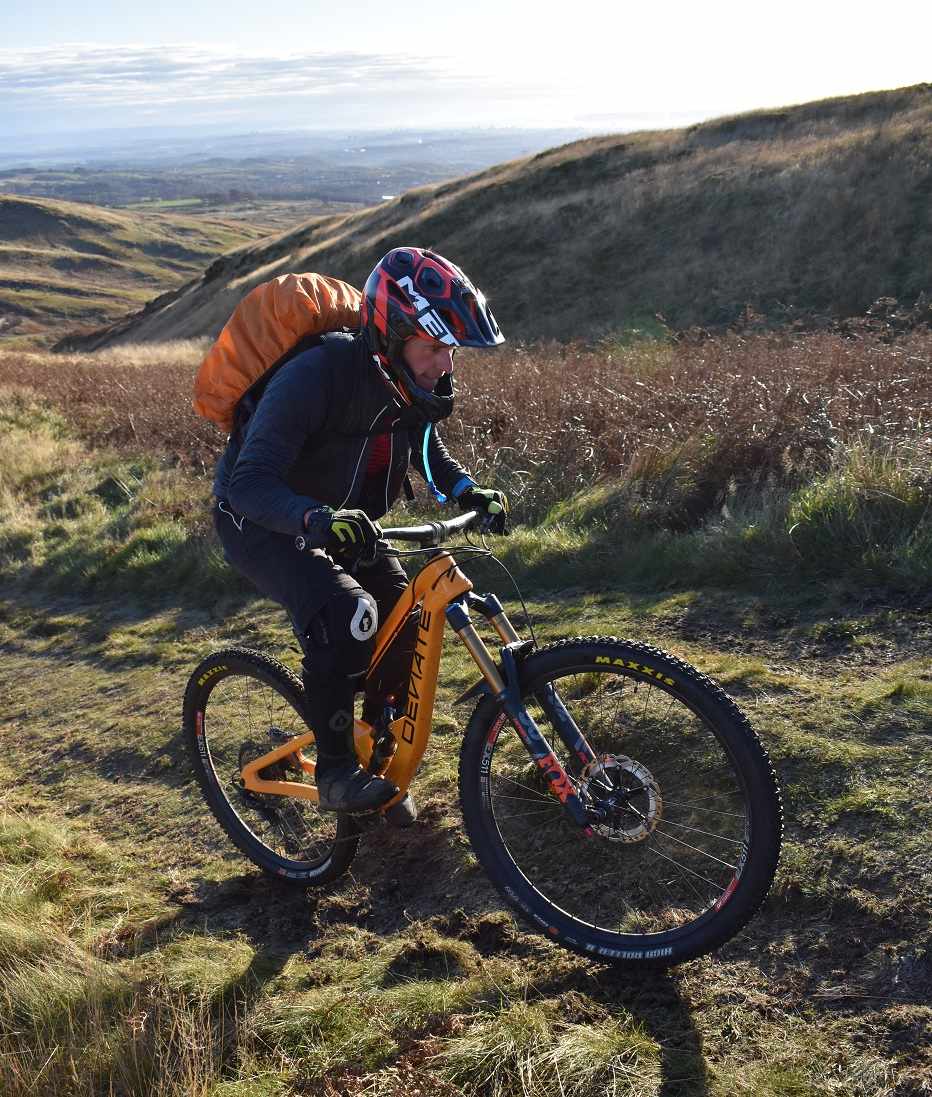
On the flowing singletrack across the plateau, Graham threw the bike about with ease as I struggled to keep up – not normally an issue for me as we are pretty evenly matched while on the downhill, I was somewhat ragged as he pulled away from me, happily throwing himself off drops and step downs as if he had been riding the Highlander for years. Eliciting his impressions, his echoed my thoughts. Balanced, happy in the air, climbs brilliantly, composed and capable on the downs, sprints like a demon – and with no downsides.
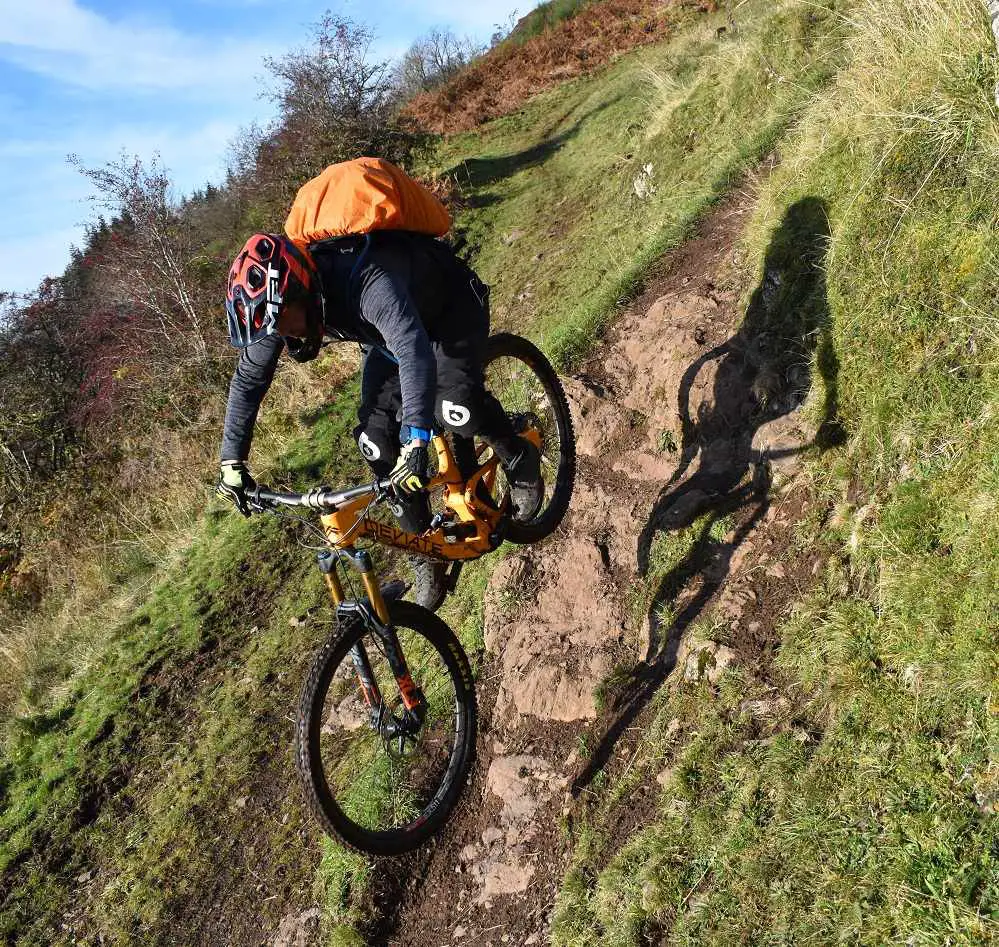
Following up this ride was a blast up the Campsie Fells north of Glasgow with Rory. I’ve written about riding there before – to get to the top, there is a lung busting brute of a climb that is on the limits of what is rideable. A mix of gravel and grass track, it is a real test piece climb. Taking turns to ride the Highlander, both of us came away impressed by just how well the Highlander copes with the toughest of climbing challenges. Despite the larger than optimal front ring, the bike got us up and over sections that have defeated many over the years. My initial impressions had been confirmed. In the Highlander, Deviate have created an Enduro bike that can climb with the best XC bikes.

Heading along the exposed clifftop singletrack, the bike’s balanced, neutral handling characteristics inspired confidence meaning that we were able to concentrate on the trail without having to worry about how the bike would cope with anything we threw at it while on the final steep, sweeping, grassy descent, it felt about as close to a chuckable mini DH bike as any bike I have ridden, despite having only 140mm of travel out back. Colour me impressed!
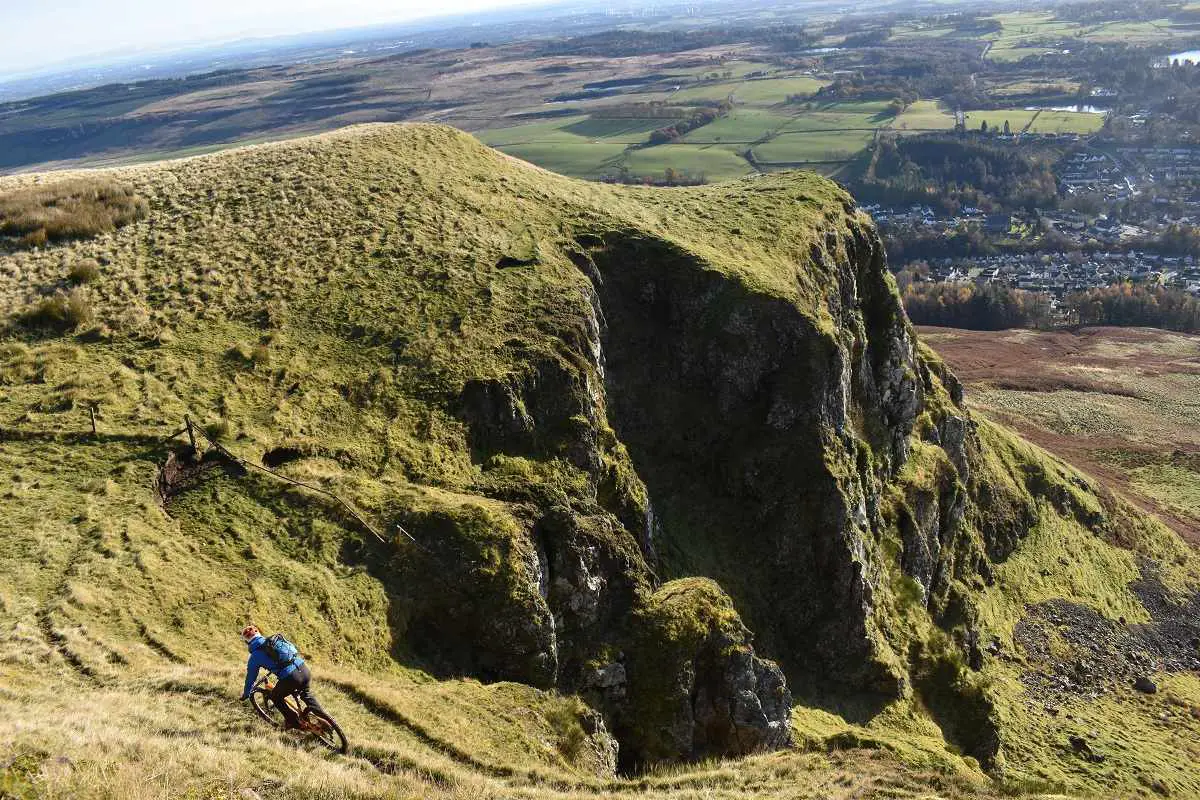
Three things that could be improved
- Swap out the 34 tooth front ring for something a bit twiddlier.
- Ditch the back tyre.
- Change the matt paint to gloss (something that is being done with the production version)
Three things we loved
- Suspension that finally delivers plushness and efficiency in a simple engineer developed solution
- Beautifully balanced feel over all types of trail
- Looks cool as hell
Overall
29 wheels, an Enduro slant and 140mm of rear wheel travel place the Highlander directly in the sights of some well-established and highly regarded competition. My limited time on the Deviate on a slightly too small for me frame meant that I didn’t have the opportunity to take it into the big mountains, but on the basis on my limited experience of the Highlander, I believe that Deviate have put together a serious challenger for the crown of ultimate Enduro bike.
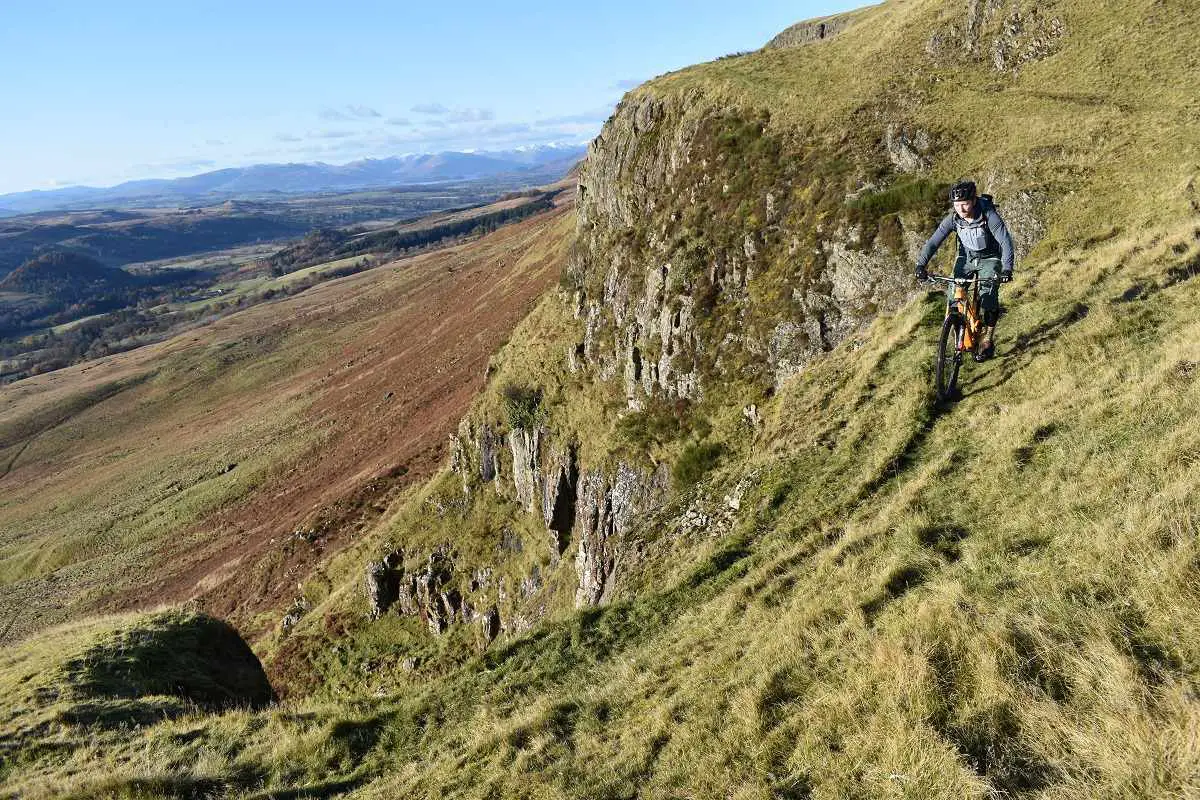
On this showing, it does everything really, really well and has proven itself a very capable performer in the hands of several testers. The idler design and high pivot point deliver on the lofty and frequently mutually exclusive promises of capable suspension performance and pedalling efficiency. I am always hesitant when it comes to giving a glowing review. Nothing is perfect. But damn, the Highlander comes very, very close. Throw in a lifetime warranty and I’m struggling to think of a good reason not to buy one. If you are in the market for a new bike, you would do well to have the Highlander firmly in your sights.







I had the pleasure of a weekend on a pre production Highlander. Deeply impressive and well thought out bike. Deviate is going places.
Only just watched the video. You’ve got to love the descent off Lochnagar eh? That is a proper mountain bike trail! Pretty much the kind of trail that the Highlander excels on. Perhaps I should have just put the video up instead of writing the review? Ha! Ha!
Cheers
Sanny
Hello to Jason Isaacs. Nice bike too.
What makes this one more exclusive than the other reviews out today?
Only one in a UK mag, EnduroMTB are in Germany & everywhere else is just a press release, rather than a ride review.
EnduroMTB are German? Half of their stuff is in the Tweed Valley (Trev Worsey) and the test was in Dunkeld (again with Trev Worsey)
I notice that the titles been changed anyway
@mashr I guess they decided to let some other people ride it after all…
Am I looking at the wrong video, that’s the Achnashellach descent on the Torridon loop, not Lochnagar?
Mctrail Rider on youtube. Rides a deviate.
Some of his videos, give a great sense. Of how capable these, bikes are.
As does Grizzly Munro Diaries (mctrail riders YT got hacked I think)
Vid I looked at was definitely torridon too.
I had a brief test on the Highlander whilst demo-ing the Guide. Brilliant bike, I instantly felt at home on it and was able to push hard. I would have ordered one if it had a gearbox. I got a Guide instead, but have fitted 29″ front end. Previous bike Specialized Enduro 29er. Riding 2-3 times per week, every week, in the NW of England, I was totally fed up with the amount of time maintaining the bike. Drivetrain, bearings, bottom brackets, etc. The Guide is so much better able to resist our conditions and I expect it to save me a lot of time and money going forward.
Deviate have pre-production demo bikes that can be tested and they’ve been giving guided test rides from Stirling: details on their website. They know have a workshop and will build the ordered bike to your specification.
The Deviate video was filmed in Torridon and Inverness in a series of very small weather windows during a recent storm.
Doh: They “now” have a workshop 🙂
Sorry. Torridon it is. I was looking at the static images from Ballater as I was typing. Doh!
Oh and I was the first journo to ride it back in October but guess Ben decided to give it to Enduro too subsequently. No matter. Still a cracking bike!
I rode the pre-production Deviate in Spain. After 3 days on my Ibis RipMo it was definitely a different experience. My Ibis is a L and this was the Med. I’m right on the edge between M and L sizing wise. It felt a bit small sat on it but I mostly forgot about that when riding it.
The way the rear suspension works (up and down) feels close to magic. There is just zero feedback under power or braking. DW link bikes climb brilliantly, I think the highlander is better.
Down it just felt very confident, really sat in the bike (prob as it was a medium), loads of grip and just a fab bike to ride on pretty challenging trails.
Better than the film of the same name, are you mad?? It was an awesome film!!
Hi Sanny,
Thank you for the very detailed review, much appreciated!
Could you please share how tall you are and how the Medium frame fitted you? And maybe share the same info from other testers.
That should help some interested buyers in determining the correct size. It sure will help me 🙂
Bike and rider would be very helpful, especially as it was stated in the review that the bike felt a little small. I ordered a medium today as that is what Ben from Deviate recommended, I ride a L 2019 Stumpjumper and I’m usually between the medium and the large.
Hi folks
So I am six foot one with long arms and the medium was definitely on the small side as I was slightly beyond the maximum amount of post showing.
Graham is five foot ten if memory serves and Rory a little taller. The medium seemed to fit them really well.
For me, I would go large and have a bit more uncut steerer to bring up the front end to suit my tastes.
Hope this helps?
Cheers
Sanny
Thank you Sanny for getting back to us, much appreciated. That is certainly very helpful information.
With my 180cm (5 foot 9) I am very close to the other testers, so I guess both sizes should suit me relatively well.
In order to avoid any confusion, as I am clearly not used to count in feet and inches and my previous conversion therefore was not correct:
180cm = 5.9 foot = 5 foot 11 inches